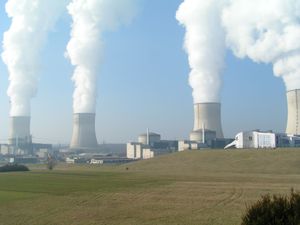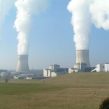
IS NUCLEAR POWER A REALISTIC OPTION FOR BELARUS?
Publication: Eurasia Daily Monitor Volume: 4 Issue: 167
By:

The issue of building a domestic nuclear power station in Belarus has cropped up several times of late, but there is no definitive program in place. A year ago, the issue appeared to be resolved, with a proposed location in Mahileu region and a timetable for bringing the first reactor on line (Belgazeta, September 12, 2006). Recent statements by leading figures in the Belarusian government, however, indicate that the question has not been thought through properly and may constitute simply a reassuring message to the public in light of the continuing problems of reliance on supplies of Russian oil and gas.
The Belarusian media has reported in the past that following exploration of possible sites for a nuclear plant in the mid-1990s that a VVER (water-pressurized reactor) station would be completed by 2013-2015 and would reach a maximum capacity of 2,000 megawatts (i.e. two 1,000-megawatt reactors). One of the chief advocates has been Mikhail Myasnikovich, a close associate of President Alexander Lukashenka, and the chairman of the Belarusian Academy of Sciences (EDM, December 6, 2006). Despite the current ban on building reactors, which expires in 2008, as well as the continuing medical problems and contaminated land that resulted from the 1986 Chernobyl disaster, the Belarusian government declared that construction would begin in 2010.
In a recent interview, Deputy Chairman of the Academy of Sciences Uladzimir Tsimashpolsky noted that geographical conditions in Belarus, with a preponderance of lakes, are unfavorable for construction of any facilities. As a result, the costs for building a station are $2,000 per kilowatt of capacity, well above the world average of $1,600. However, Tsimashpolsky’s outlook was optimistic, and he surmised that Belarus might become an exporter of nuclear power to Russia as a means of alleviating the costs for natural gas imports (www.charter97.org, September 6).
He also surprised the audience by stating that the nuclear plant’s location was not yet fixed, and that there were three possible sites. Since two had been cited earlier, determined from 54 original possibilities, he was asked about the third, and replied that it was in the Hrodna region of Western Belarus. As the Lithuanians proposed to bury nuclear waste from the Ignalina RBMK-1500 (graphite-moderated) station directly on the border with Belarus, then why should the Belarusians not use this same area to build their own plant, he wondered (Komsomolskaya pravda v Belorussii, September 7). He acknowledged that one of the sites in Mahileu region was the most likely location, however (BELTA, September 6). The two Mahileu locations are at Krasnapalyanskaya (Bykhau region) and Kukshinauskaya (Shklou region).
At a press conference on August 30, Uladizmir Babrou, head of the Chief Administration of Future Development and Investment of the Ministry of Energy, declared that the important issue was the relative significance of economic expediency and the energy security of the state. In his opinion the first unit of the proposed station could not be brought into service before 2015, and realistically it could be two years after that date, with the second unit ready by 2020. Belarus lacks qualified builders and planners, particularly people with a specialized education and hands-on experience, as well as licenses from the IAEA. The station must therefore be constructed using the experience of foreign countries such as Ukraine, Russia, and Lithuania. Babrau also stressed the importance of developing other forms of energy (such as hydroelectric and wind-power) and the possible building of an inter-state electrical power line from the Rivne nuclear plant in Ukraine. The latter has aroused interest in several countries because of the forthcoming closure of the second power unit at the Ignalina plant, an important energy supplier for the Baltic states (Belorusy i rynok, September 3-10).
What is evident from these announcements is a fundamental difference of opinion within the scientific and political hierarchy of Belarus regarding the government’s demand to resolve the energy impasse with Russia by resorting to domestic production through nuclear power. Belarus lacks the wherewithal and resources to build its own station. The initial timetable offered a foolhardy and even callous approach — particularly regarding the location of the station in a contaminated zone (EDM, December 6, 2006) — and could not have been met without sacrificing safety standards.
Interestingly, since Belarus cannot construct its own reactors, it would likely turn to the Russians for assistance. Then the question arises as to whether the fuel for Belarusian reactors would need to be purchased at world prices; thus a Catch-22 station would be in place. Ukraine expanded its existing program with the help of the G-8 countries and to compensate for the shutdown of Chernobyl in 2000. Belarus has no such negotiating power or indeed friends in the industrialized countries of the West.
Further, it is hard to avoid the conclusion that political posturing has replaced reasoned and scientific analysis of the various sites and building plans. The notion of exporting nuclear energy to Russia seems far-fetched given the scope and ambitions of Russia’s own civilian nuclear program. Last September, Rosatom declared that its goal was to provide 23% of Russia’s electricity from nuclear plants by 2020, by which time nuclear capacity would be increased by 2-3 times (www.world-nuclear.org/info/inf45.html). Even given the possible depletion of gas reserves by that year, it is unlikely that the Russians would need imported electricity from Belarus. The Belarusians clearly need to rethink this issue.




